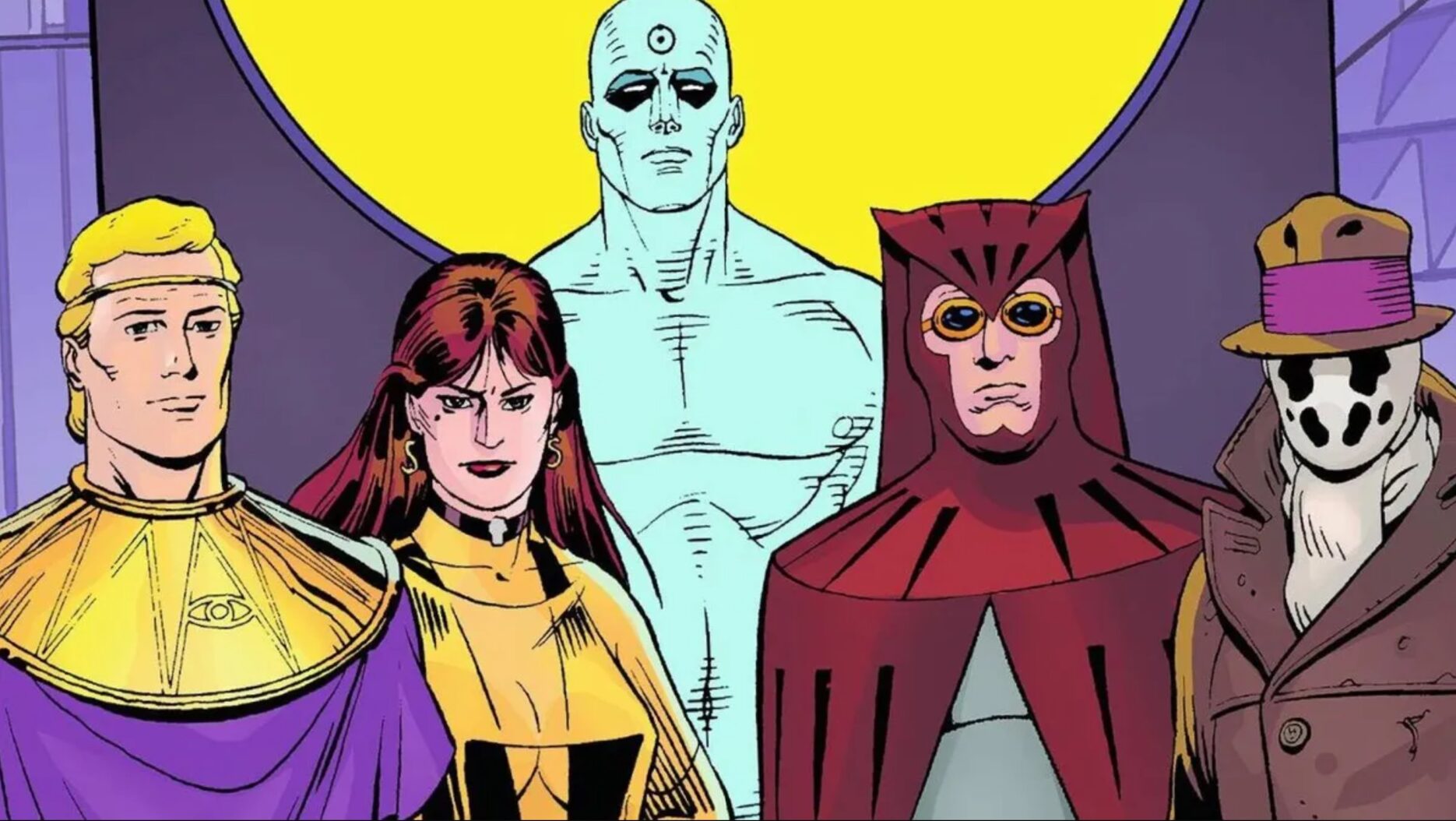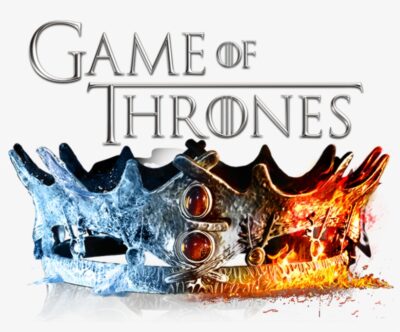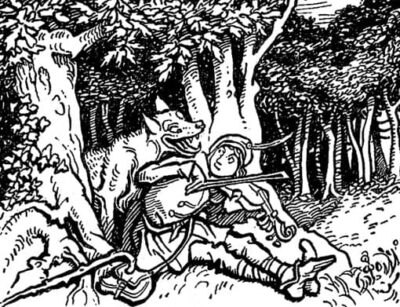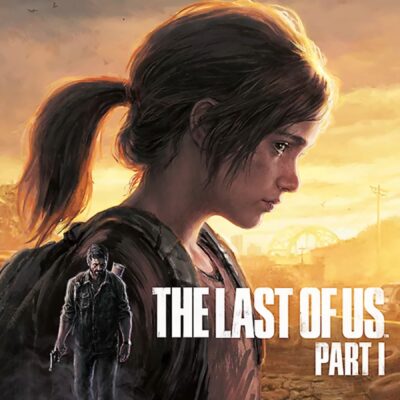Who Watches the Watchmen?
Watchmen is a graphic novel written by Alan Moore and art by Dave Gibbons. It is set in the 1980s on an Earth where the Watergate Scandal was never exposed and Richard Nixon is still president. Legislation has outlawed vigilantism and the Cold War continues to march forward toward impending armageddon. The story begins with the investigation of the murder of an old hero, The Comedian, which pulls many heroes out of retirement. It is revealed over time to be a grand conspiracy that would determine the fate of all humanity.
Origin Story
I used to be huge into comic books. I would read them in my bed every night and they were the primary topic of conversations with friends. I cannot recall how I came across the book but I know it caught my attention because it is widely regarded as one of the greatest, if not the greatest, graphic novels of all time. I prefer DC comics far more than Marvel, so the book was also interesting because DC was the publisher. I bought my first copy of it off Amazon and in a paperback version because I think I preferred that edition at that time. I now own an oversized hardcover deluxe edition, seen below.
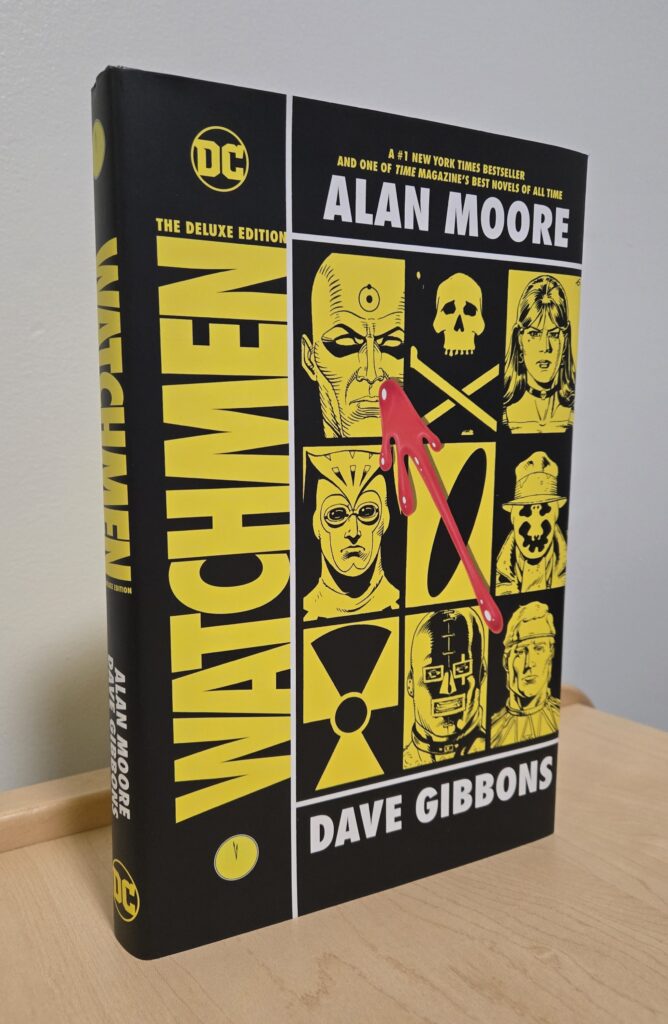
A Lasting Impact
When I first read the book, I was blown away, and I still am when I reread it. The book has had a lasting impact on me and my view of literature as a whole. In fact, the book set the standard of literature for me in a way and branded certain techniques in my conscience.
Philosophy
I’ve always been fascinated with philosophy and pondering the big questions of life and death. Watchmen excels at this. The book has been one of the most thought-provoking fictional pieces I’ve ever come across. It blends all genres and transcends it to the real world to ask a chief moral question about humanity regarding the power we hold to either pacify or destroy all things.
A key technique that resulted in this powerful feature was the use of epigraphs at the end of each chapter. Watchmen writer Alan Moore put a quote at the end of each of the 12 chapters in order to push and conclude the philosophical theme he was aiming for. Each chapter title is taken from the closing epigraph, which envelops each chapter in a grander idea. The book taught me the power of a single line and its ability to magnify the meaning of a story and transcend the pages to a philosophical point about the real world. The source of quotations ranges from songwriters to the Bible. I fell in love with Watchmen‘s use of epigraphs at the end of each chapter and now I cannot go without using one in my own personal writing.
The example below ends the chapter where the all-powerful Dr. Manhattan was forced into self-exile to the planet Mars. The quotation used was from Genesis 18:25 in the Bible, which states “Shall not the Judge of all the earth do right?”. The biblical story is when Abraham was pleading with God not to bring judgment on the wicked cities of Sodom and Gomorrah because there may be righteous men in them. This simple quote at the end of the chapter pushed the philosophical question of Watchmen from “Who’s side is the omnipotent man on and will he act?” to “Will the power that we have as human beings bring about our destruction?” Bringing the reverence and fear of the Old Testament to the omnipotent and indifferent man empowered this theme of morality of power. This is a driving theme throughout the story.
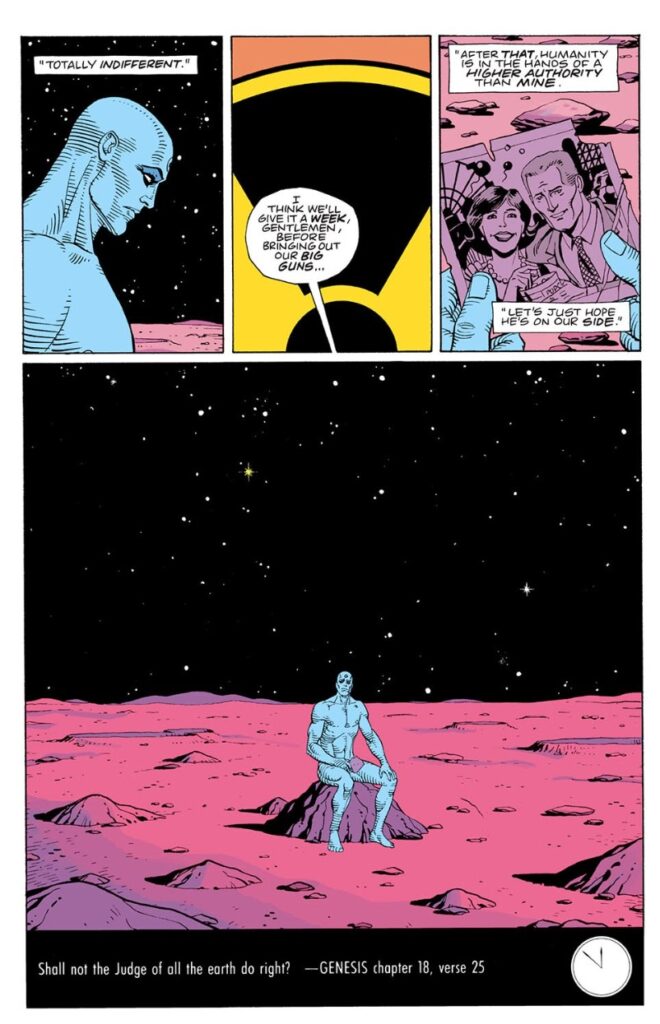
Watchmen, Chapter III, p. 28
Watchmen also led me to enjoy new content of other genres. The book got me into Bob Dylan through its use of his quotes in the epigraphs. There were also references to some poetry that led me to have an interest in it.
Maturity and Realism
I had never read such a dark and grim story before, let alone as a superhero story. The maturity level of the book opened my eyes to what comics and storytelling could be and how mature content should be used in literature and storytelling. Watchmen uses mature content with grave sincerity which made me feel like I was living in the fictional universe because of the realism.
The opening line of the book presents one of the leading heroes, Rorschach, as a gritty pessimist tortured by the evils of reality, who exalts himself as the savior of humanity. This immediately showed me I was about to read a very different kind of story, one far more mature and philosophical than the works I was used to. The stories I was accustomed to pulled me out of the troubles of life to rest in and explore the action and imagination of a fictional world, while Watchmen threw me into the darkest parts of reality where I could do no other than confront the world I live in.
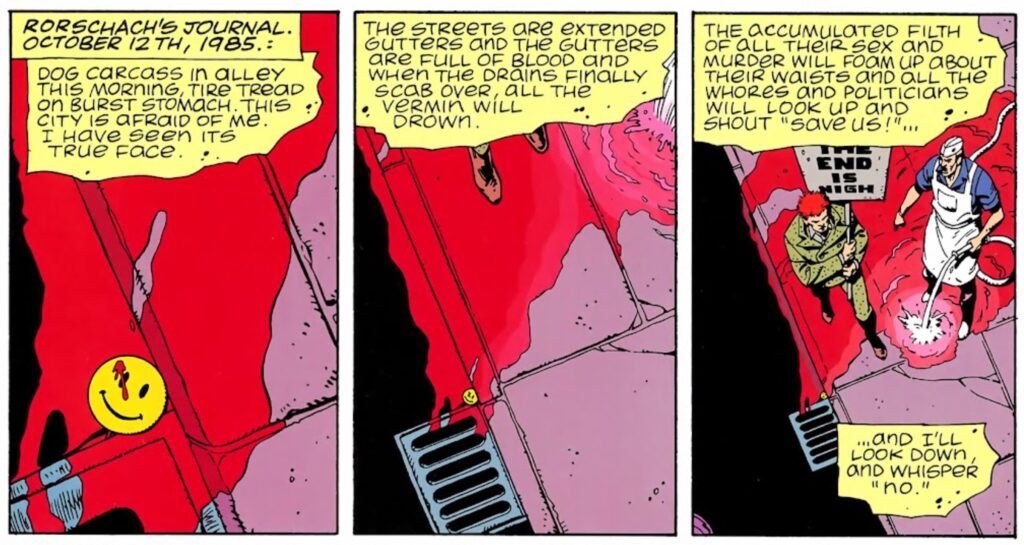
Watchmen, Chapter I, p. 1
Watchmen descends into the darkest parts of the human heart to unearth what is really in the heart of humanity. Topics that are explored include sexual assault, ethics of war, genocide, politics, mental illness, heinous violence, and vanity of life, all of which were not explored in comics at the time of publishing, nor in my experience with reading them.
Art
The art of Dave Gibbons was phenomenal. I was used to very modern and dynamic art but Dave Gibbon’s art was simpler and static. Every panel was like a painting unlike the highly detailed and animated styles of art comics have adopted. I used to want to write comics and the panel layout and style of art became my standard and inspiration. Below is a comparison between pages of Watchmen and a modern Batman Comic.
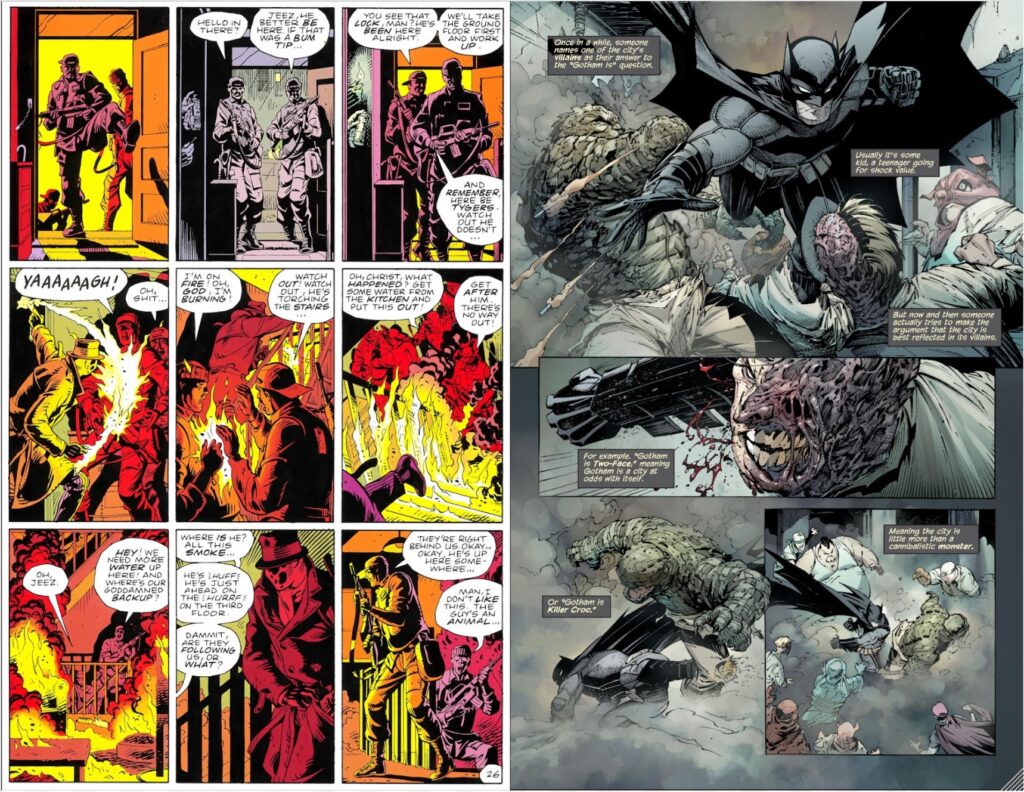
Watchmen, Chapter V, p. 26. Art by Dave Gibbons (Left)
Batman #1 (2011), p. 3. Art by Greg Capullo (Right)
Subverting Genre Expectations
Watchmen is famous for its deconstruction of the superhero genre. Writer Alan Moore took superhero tropes and subverted all of them to create a superhero story like no other. This feature made the story captivating because it exposed all the silly tropes of the superhero genre and transformed the genre into something brand new. Some of the subverted tropes in the book include:
- Every character stays dead. There are no resurrections, unlike the rest of the superhero genres. With the continuous use of resurrecting dead characters, comics have lost the significance of death. However, in Watchmen, death is absolute, which carries a greater weight.
- Grim and dark storytelling. This was not common in the 1980s when the book was published.
- Intense realism, using the Cold War to drive the story. The story also used real people such as Richard Nixon.
- The heroes are not admirable. They are amoral, unlawful, and sometimes vile.
- The villain is successful in his plan and “wins”.
- The villain executes his master plan before revealing it to the heroes in his “villain speech”. This trope is common in older comics and stories such as James Bond films. This example is shown below.
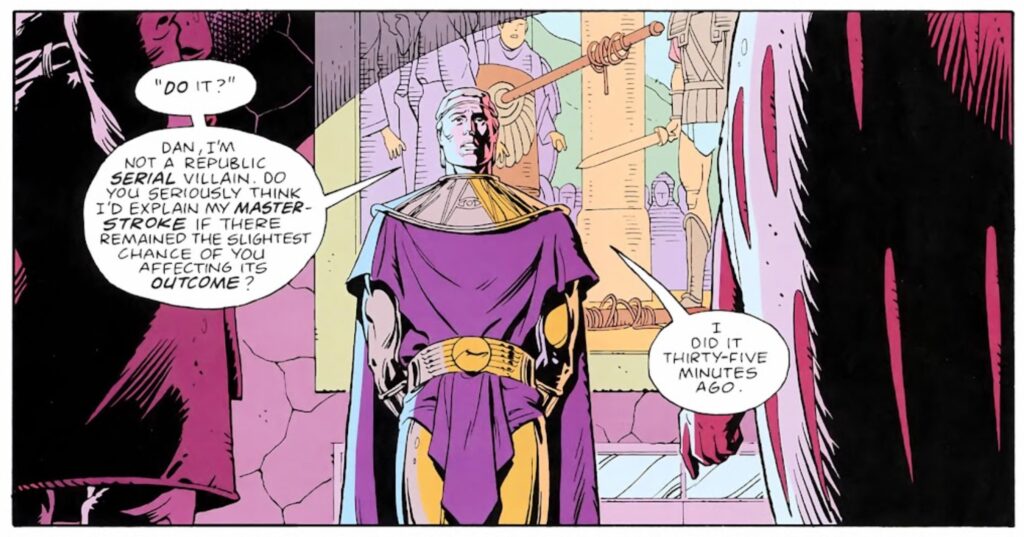
Watchmen, Chapter XI, p. 27
Awestruck
I could speak endlessly on the brilliance of Watchmen, but these points primarily define my experience reading the book. Ultimately, I was awestruck when I first read Watchmen, and it has left a lasting impact on my subconscious and perspective on literature.
Works Cited
Moore, Alan, and Dave Gibbons. Watchmen. DC Comics, 2019.
